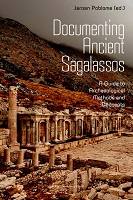Scarsella, Elena
This PhD dissertation aims to investigate the formative dynamics of identity in mountain societies, through the case-study of the late Iron Age Aterno Valley (Central Apennines). The approach adopted in this PhD is not limited to one source of data, but involves landscape, cemeteries, macro and micro topography, and spatial and temporal distribution of material culture. Here, I advocate that peculiar and fragmented human landscapes such as Mediterranean mountains are prone to a constant scarcity of resources and hence to a fierce competition over them. This forces the people inhabiting these landscapes to adapt constantly their social and economic strategies to maintain a critical balance in the availability and circulation of resources. In this frame, violence, both in its display and practice, plays the pivotal role of redistributing and facilitating the (not always consensual) circulation of materials and wealth. This is particularly true for the period between the 7th and the 5th century BC, when a widespread display of aggressive power is clear both on the landscape and the material culture. This balance came to an end around the second half of the 5th century BC, when, for a combination of factors, the archaeological visibility of the area is blurred. By the end of this period of crisis, in the second half of the 4th century BC, a different balance gradually emerged, still competitive, but on the ground of trade, rather than violence. The Vestine identity formation process, as seen in the longue durée, is hence not a linear process but an ever-changing picture of which Roman literary sources were able to catch but a glimpse.
Date
2022-09-01Advisors
Stoddart, Simon































 Stumble It!
Stumble It!
